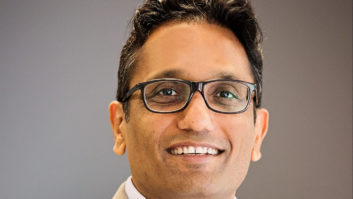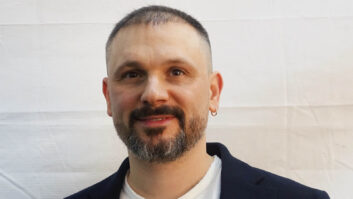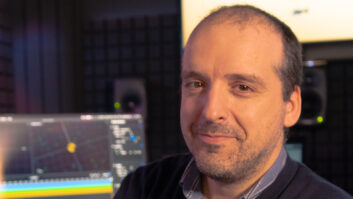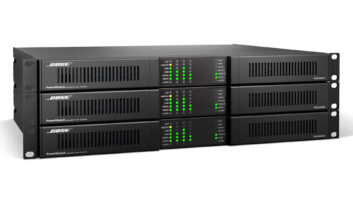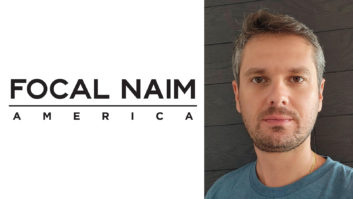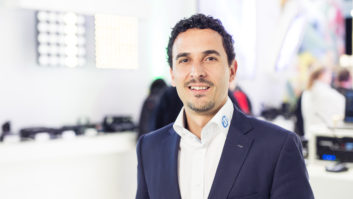
“I have found that if you can master the fundamentals of how businesses run, you can apply them to completely different industries,” said Glenn Burack. “Having that broad and diverse experience means I can leverage all the different industries and functions I’ve worked in and look holistically at how Bose serves the professional audio industry.”
That broad view has served Burack well. Prior to joining the pro audio manufacturer, he worked in a variety of industries including industrial, financial and even software, and he feels it’s because of those experiences that he’s been able to bring a diverse perspective to his work at Bose. While he joined Bose in 2004, Burack has been the manufacturer’s director of aviation, military and broadcast headsets for the last five years, where he uses that ability to take the lessons, insights and occasionally technologies gained in one market and apply them elsewhere.
In his position, he brings noise canceling headset technologies to military ground operators and airmen—something Bose is very familiar with. “We have been developing aviation and military headsets for many years, having debuted that headset technology in 1986 for the pilots on the Voyager mission,” he says.
The question then became, What are some other similarly challenging environments that could benefit from the technology? “We look at our products and we ask, ‘What if?’ and ‘Who else could this help?’” he explained, adding, “After almost 30 years, we had come to understand more than most how those critical communication environments have very specific needs that are different than those of the rest of the business.”
Innovations: Bose SoundComm B40 Headset, by matt Ruwe, June 24, 2020
In 2016, the company started to add live event communications with the launch of the Bose SoundComm B30, a headset that is used exclusively by NFL head coaches and coaching staff. “The professional football field is a demanding environment,” Burack said. “Calls to and from head coaches and staff need to be understood clearly and quickly within a high-noise environment.” Burack finds that durability is also key, so the headsets can endure sweat, a variety of weather conditions, and being tossed around—and they must be comfortable enough to be worn during an entire game.
From there, entering the live event production industry in 2019 was a “natural next step” for Bose, he said. “Individuals working in each of these environments work in high-noise settings, often with harsh conditions, for long periods of time, all while depending on communication to be successful in their jobs,” he said. “We made a significant evolution when we entered the live event industry with the introduction of the SoundComm B40. We recognized that the technology and our core capabilities that had been so successful in the other industries we served could make a difference in the live event segment, so we went after it.”
Even with COVID-19 impacting live events, sports and places of worship, Burack remains optimistic that the market will come back and be even stronger.
“Long term, we see opportunities across all of our focus areas: aviation, military and live event production,” he said. “Even though they’re three separate markets, they’re more closely aligned than most people realize. There are common technologies and capabilities that customers are looking for in all three, which is why they’re grouped together under one division. In all scenarios, active noise cancellation is a key factor to enhancing intelligibility and clear communication in critical communication environments.”
Bose Professional Debuts Bose Church Initiative, Giveaway, Aug. 12, 2020
Burack noted that comfort is non-negotiable in these environments, since headsets are worn for long periods of time. “A sound engineer at a live event will wear a headset for three or four hours; a pilot, for eight to 10. For someone in a tank, it could be 12 hours,” he said. “So comfort is just as important as everything else. Where Bose excels is in combining all these things together.”
Bose also constructively assesses its efforts with the goal of continual refinement: “We are committed to always strive to improve on the last product we brought to our customers in terms of both technology and experience. And we do that not only by staying true to our core values and culture of innovation, but also by leveraging the technologies and learnings from our customers to benefit each of the industries we serve for years to come.”
That approach is key to understanding both the company’s longevity and how it functions. Burack explained, “Culturally speaking, Bose has changed very little since its founding. The company’s essence, values and core beliefs have remained unchanged regardless of external factors, including the economy. These are the very things that move us forward and drive our innovation. Our values are rooted in creating great products and experiences that make a difference to customers. Whichever market we’re serving, whether it’s the consumer market, aviation, military, professional audio, automotive or health, those values are the same.”
However, Burack feels innovation is also at the root of the working culture at Bose. “Our founder, Dr. Amar Bose, built the company on the belief that we should always dream of ideas that are better and imagine new ways to reach those dreams,” he said. “This culture of innovation is pervasive throughout the company, allowing us to try things, take certain risks and see where they go. When you do that, you end up with remarkable products.”
Bose • www.bose.com
